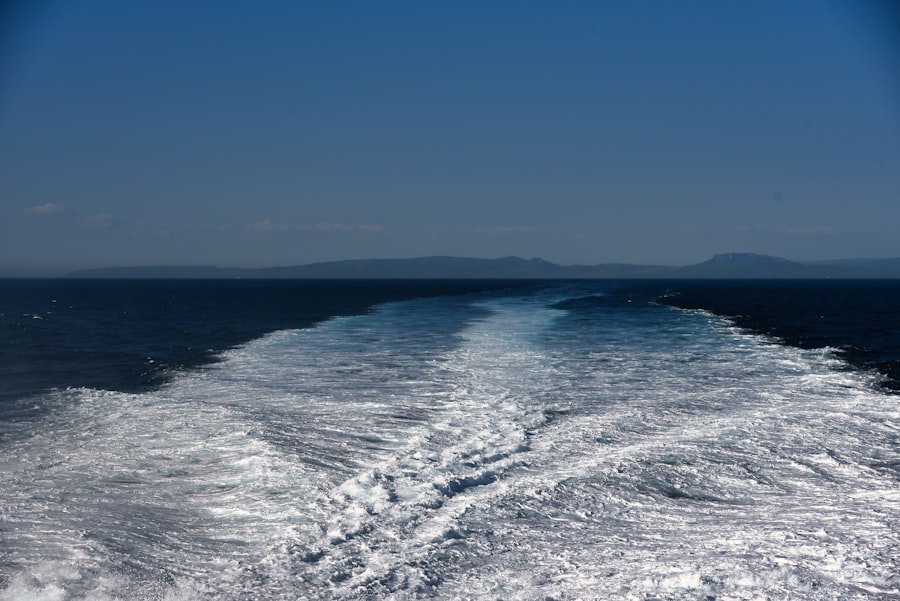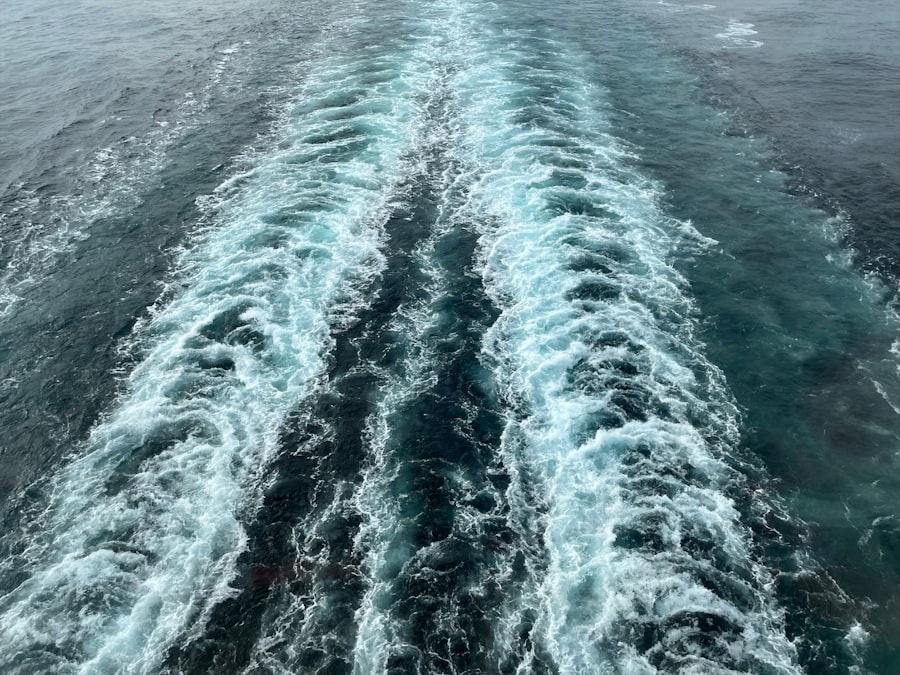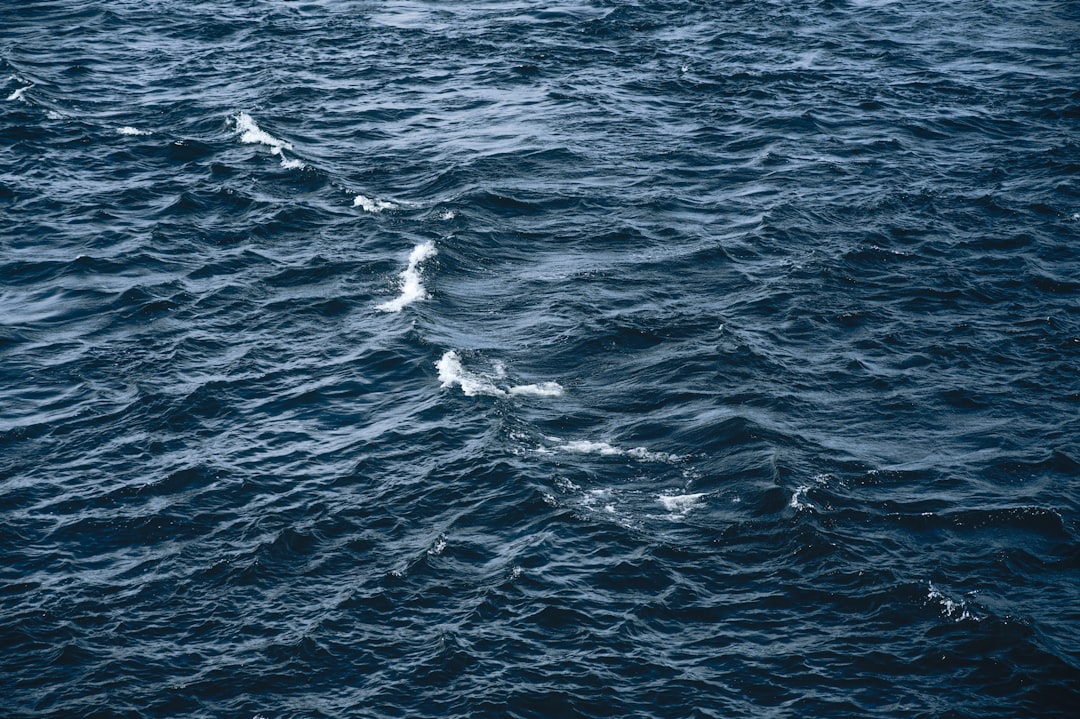The Drake Passage, a body of water situated between the southern tip of South America and Antarctica, is renowned for its tumultuous seas and unpredictable weather patterns. This narrow stretch of ocean, measuring approximately 800 kilometers (500 miles) wide, serves as a critical conduit for maritime traffic between the Atlantic and Pacific Oceans. The passage is named after the English explorer Sir Francis Drake, who navigated these waters in the late 16th century.
Its significance extends beyond mere geography; it plays a vital role in global oceanic circulation and climate regulation. The unique geographical features of the Drake Passage contribute to its notorious reputation. The convergence of the Atlantic, Pacific, and Southern Oceans creates a complex interplay of currents and winds that can lead to extreme weather conditions.
The passage is characterized by its deep waters, which can reach depths of over 4,000 meters (13,000 feet), and its proximity to the Antarctic Peninsula, which influences both marine life and navigation. Understanding the dynamics of this region is essential for sailors and researchers alike, as it poses both challenges and opportunities for exploration and trade.
Key Takeaways
- The Drake Passage is a narrow stretch of water between South America’s Cape Horn and the South Shetland Islands of Antarctica, known for its strong and unpredictable currents.
- Factors affecting current speeds in the Drake Passage include wind patterns, water temperature, and the shape of the seafloor, which can create funnels that accelerate the flow of water.
- Historical data on current speeds in the Drake Passage show a wide range of variability, with speeds reaching up to 10 knots in some areas.
- Weather conditions such as storms and strong winds can significantly impact current speeds, making navigation through the passage challenging for ships and vessels.
- Current speeds in the Drake Passage are crucial for navigating the area safely and efficiently, as they can affect travel time, fuel consumption, and the overall safety of the journey.
Factors Affecting Current Speeds
Current speeds in the Drake Passage are influenced by a multitude of factors, including wind patterns, water temperature, and the Earth’s gravitational pull. The interaction between these elements creates a dynamic environment where currents can shift rapidly. For instance, strong westerly winds, prevalent in this region, can significantly accelerate surface currents, leading to speeds that can exceed 10 knots in certain areas.
Additionally, variations in water temperature can affect the density of seawater, further influencing current behavior. Another critical factor is the topography of the seafloor. The underwater landscape of the Drake Passage features ridges, valleys, and islands that can alter the flow of water.
As currents encounter these submerged features, they may be deflected or intensified, resulting in localized areas of strong current. Understanding these geographical nuances is crucial for mariners who must navigate through this challenging environment. The interplay of these factors creates a constantly changing tapestry of currents that requires careful monitoring and analysis.
Historical Data on Current Speeds

Historical data on current speeds in the Drake Passage reveals a complex pattern influenced by both natural phenomena and human activity. Over the years, researchers have collected extensive data through various means, including satellite observations and oceanographic buoys. This data has shown that current speeds can vary significantly depending on the season and prevailing weather conditions.
For example, during the summer months, when winds are typically stronger, current speeds tend to increase, while winter months may see more subdued conditions. Moreover, long-term studies have indicated that climate change may be impacting current speeds in the Drake Passage. As global temperatures rise, alterations in wind patterns and ocean temperatures could lead to shifts in current behavior.
Historical records provide a baseline for understanding these changes and their potential implications for navigation and marine ecosystems. By analyzing past trends, researchers can better predict future conditions and prepare for the challenges that lie ahead.
Impact of Weather on Current Speeds
| Weather Condition | Impact on Current Speeds |
|---|---|
| Clear skies | No impact |
| Light rain | Slight decrease |
| Heavy rain | Significant decrease |
| Strong winds | Decrease and potential danger |
| Fog | Significant decrease and potential danger |
Weather plays a pivotal role in shaping current speeds within the Drake Passage. The region is notorious for its rapidly changing weather patterns, which can shift from calm to stormy within a matter of hours. These fluctuations are primarily driven by the strong westerly winds that dominate the area.
When storms develop, they can generate powerful surface currents that significantly increase overall current speeds. Mariners must remain vigilant during such weather events, as conditions can quickly become hazardous. Additionally, precipitation and temperature changes can influence water density and stratification, further affecting current dynamics.
For instance, heavy rainfall can introduce freshwater into the ocean, altering salinity levels and potentially impacting current flow. Understanding these weather-related factors is essential for safe navigation through the Drake Passage. Mariners must be equipped with accurate weather forecasts and real-time data to make informed decisions while traversing this challenging maritime corridor.
Importance of Current Speeds for Navigating the Passage
Current speeds are of paramount importance for vessels navigating the Drake Passage. Mariners must account for these speeds when planning their routes and estimating travel times. Strong currents can either aid or hinder a vessel’s progress, making it crucial to understand their behavior.
For example, navigating with a favorable current can significantly reduce travel time and fuel consumption, while adverse currents can lead to delays and increased operational costs. Furthermore, knowledge of current speeds is essential for ensuring safety during passage. Vessels caught in unexpectedly strong currents may struggle to maintain control or could even be pushed off course.
By understanding current patterns and speeds, mariners can make strategic decisions about when to enter or exit the passage, ultimately enhancing their chances of a successful journey. This knowledge not only benefits individual vessels but also contributes to overall maritime safety in this challenging region.
Strategies for Navigating Strong Currents

Navigating strong currents in the Drake Passage requires careful planning and execution. One effective strategy is to time departures based on tidal cycles and prevailing wind conditions. By aligning travel with favorable currents, vessels can optimize their speed and efficiency.
Additionally, experienced mariners often employ techniques such as “current mapping,” where they analyze historical data to identify patterns in current behavior during specific times of year. Another important strategy involves maintaining situational awareness through constant monitoring of environmental conditions. Utilizing advanced navigation tools and technologies allows mariners to track real-time changes in current speeds and adjust their course accordingly.
This proactive approach not only enhances safety but also improves overall navigation efficiency in the unpredictable waters of the Drake Passage.
Technology and Tools for Monitoring Current Speeds
Advancements in technology have revolutionized the way current speeds are monitored in the Drake Passage. Modern vessels are equipped with sophisticated navigation systems that integrate data from various sources, including satellite imagery and oceanographic buoys. These tools provide real-time information on current speeds, water temperature, and weather conditions, enabling mariners to make informed decisions while at sea.
In addition to onboard technology, researchers utilize remote sensing techniques to gather data on ocean currents over larger areas. Satellite altimetry and radar systems allow scientists to observe changes in sea surface height and movement patterns across the Drake Passage. This wealth of information not only aids navigation but also contributes to ongoing research efforts aimed at understanding the complex dynamics of this vital maritime corridor.
Expert Advice for Navigating the Drake Passage
Experts emphasize the importance of preparation when navigating the Drake Passage. Mariners are advised to familiarize themselves with historical data on current speeds and weather patterns before embarking on their journey. Engaging with experienced sailors who have successfully navigated the passage can provide valuable insights into best practices and potential pitfalls.
Additionally, experts recommend maintaining flexibility in travel plans to accommodate changing conditions. The ability to adapt to unexpected weather events or shifts in current behavior is crucial for ensuring safety during passage. By staying informed and prepared, mariners can enhance their chances of successfully navigating this challenging yet rewarding stretch of ocean.
Case Studies of Successful Passage Navigations
Numerous case studies highlight successful navigations through the Drake Passage under varying conditions.
By carefully analyzing historical data and real-time information, the crew was able to complete their journey with minimal delays and fuel consumption.
Another case study focuses on a commercial shipping vessel that encountered unexpectedly strong currents during its passage. The crew’s quick decision-making and adherence to established navigation protocols allowed them to safely navigate through challenging conditions without incident. These examples underscore the importance of preparation, adaptability, and effective communication among crew members when traversing the unpredictable waters of the Drake Passage.
Safety Precautions for Dealing with Fast Currents
Safety precautions are paramount when dealing with fast currents in the Drake Passage. Mariners are advised to conduct thorough pre-voyage assessments that include evaluating vessel capabilities and crew readiness for challenging conditions. Ensuring that all safety equipment is operational and accessible is also critical for mitigating risks associated with strong currents.
Moreover, maintaining clear communication among crew members is essential for effective decision-making during navigation. Establishing protocols for monitoring current speeds and weather conditions allows crews to respond swiftly to changing circumstances. By prioritizing safety measures and fostering a culture of preparedness, mariners can navigate the Drake Passage with greater confidence.
Future Research and Predictions for Current Speeds in the Drake Passage
As climate change continues to impact global weather patterns, future research will play a crucial role in understanding how current speeds in the Drake Passage may evolve over time. Scientists are increasingly focused on developing predictive models that account for various factors influencing ocean dynamics, including temperature fluctuations and shifting wind patterns. Ongoing studies aim to enhance our understanding of how these changes may affect marine ecosystems as well as navigation safety in the passage.
By investing in research initiatives that explore these complex interactions, researchers hope to provide valuable insights that will inform maritime practices in this vital region for years to come. As our understanding deepens, so too will our ability to navigate this challenging yet essential maritime corridor with greater efficacy and safety.
The Drake Passage is renowned for its powerful ocean currents, which play a crucial role in global ocean circulation. These currents can reach impressive speeds, making the passage a challenging route for ships. For those interested in learning more about the dynamics of ocean currents and their impact on navigation, a related article can be found on MyGeoQuest. This article delves into the intricacies of ocean currents and their significance in maritime travel. To explore this topic further, you can visit the article by clicking on this link: com/sample-page/’>MyGeoQuest Sample Page.
WATCH NOW! Drake Passage: Earth’s Deadliest Waters Revealed
FAQs
What is the Drake Passage?
The Drake Passage is the body of water between the southern tip of South America and the northern tip of the Antarctic Peninsula. It is known for its rough seas and strong winds.
What is the current speed in the Drake Passage?
The current speed in the Drake Passage can vary, but it is known for having some of the strongest and most consistent currents in the world. The average current speed is around 1-2 knots, but it can reach up to 4-5 knots in certain areas.
What causes the strong currents in the Drake Passage?
The strong currents in the Drake Passage are primarily caused by the funneling of water between South America and Antarctica, as well as the strong westerly winds that push the water through the passage.
How do the currents in the Drake Passage affect marine life?
The strong currents in the Drake Passage can affect marine life in various ways, including influencing the distribution of nutrients and food sources, as well as impacting the migration patterns of marine animals.
Are there any safety concerns related to the current speed in the Drake Passage?
The strong currents in the Drake Passage can pose a challenge for ships and vessels navigating through the area. It is important for sailors and captains to be aware of the current speed and plan their routes accordingly to ensure safe passage.
